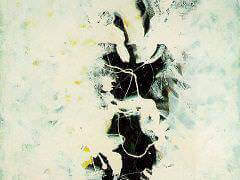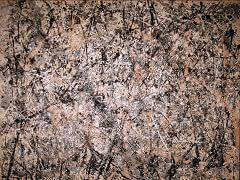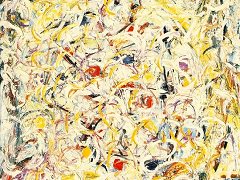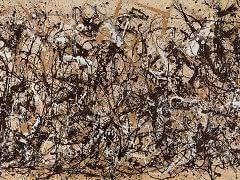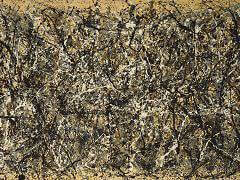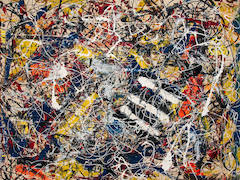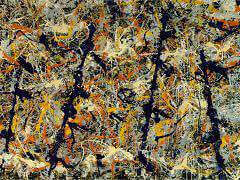Moon Woman, 1942 by Jackson Pollock
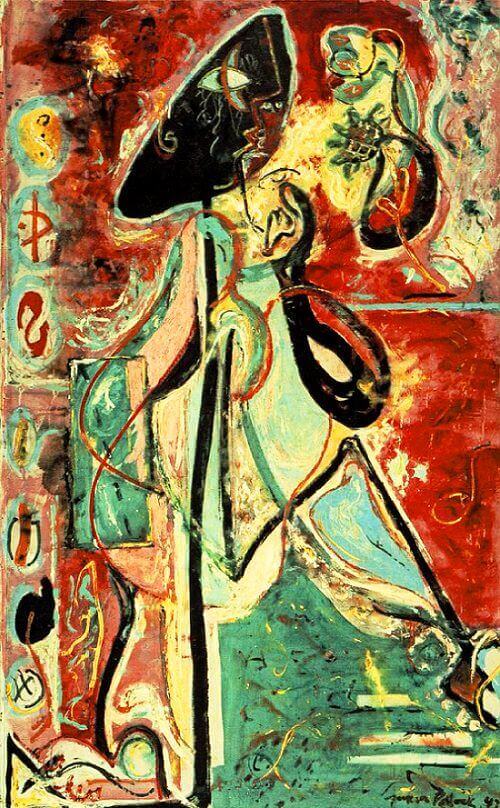
Durinq the 1930s, Jackson Pollock studied under the Regionalist painter Thomas Hart Benton ond the Mexican muralist David Alfaro Siqueiros, both of whom influenced his later work. However, in the early 1940s he was also
hugely fascinated by developments in Europe, including Surrealist Automatism and the recent paintings of Picasso, Pollock's Moon Woman clearly shows the influence of both,
Here the artist depicts a strange metamorphic creature painted in bright, garish colours. On the left, he includes mysterious hieroglyphic signs, making the work highly reminiscent of the paintings of Andre Masson (1896-1987).
By 1942, when Pollock produced Moon Woman, Masson was living in New York. However, Pollock notably combined this evocation of Automatism with stylistic devices culled directly from Picosso's recent work, including
his many representations of his mistress Marie-Therese Walter. This is most evident in Pollock's depiction of the curvaceous left arm and the split eyeball. Although Picasso himself remained in Europe, much of his work,
including his famous painting Guernica, could be seen in the Museum of Modern Art in New York at this time.



